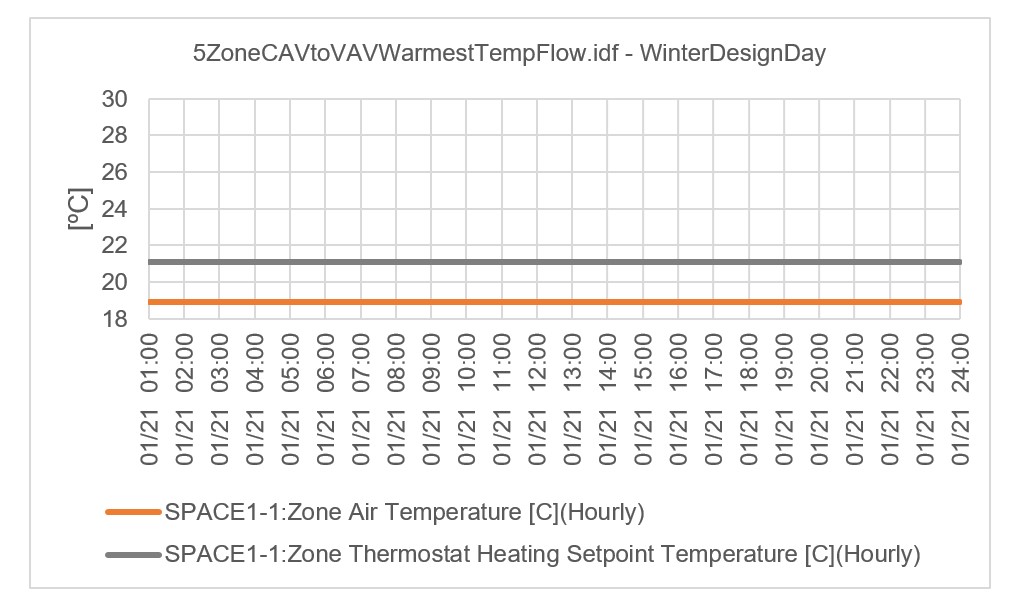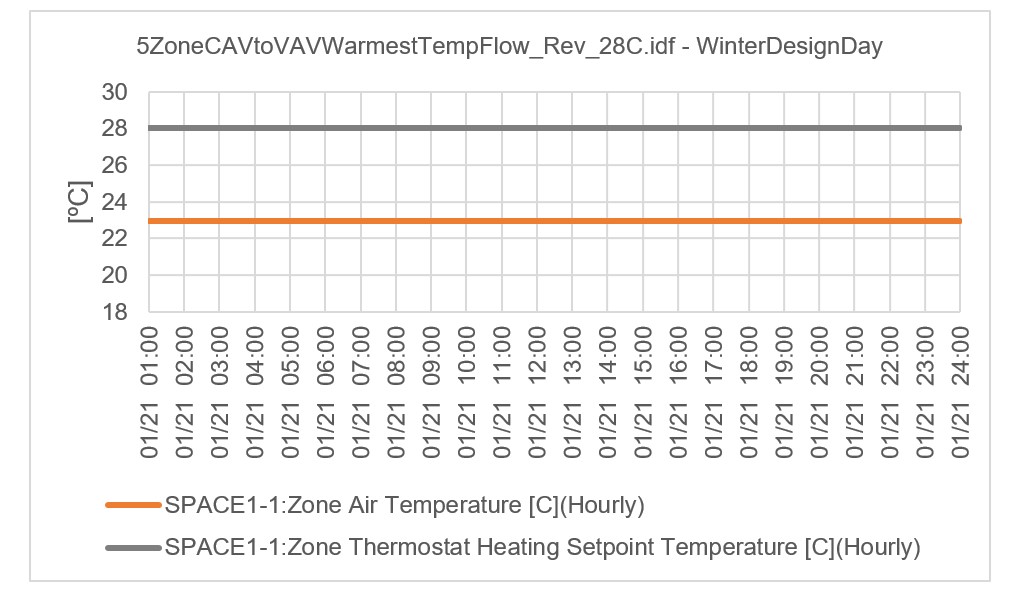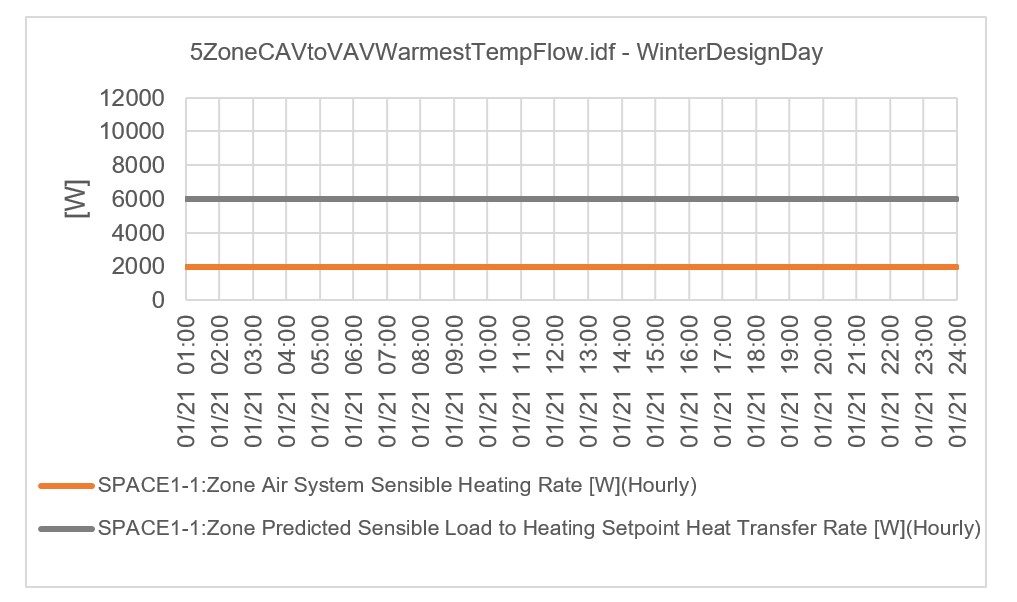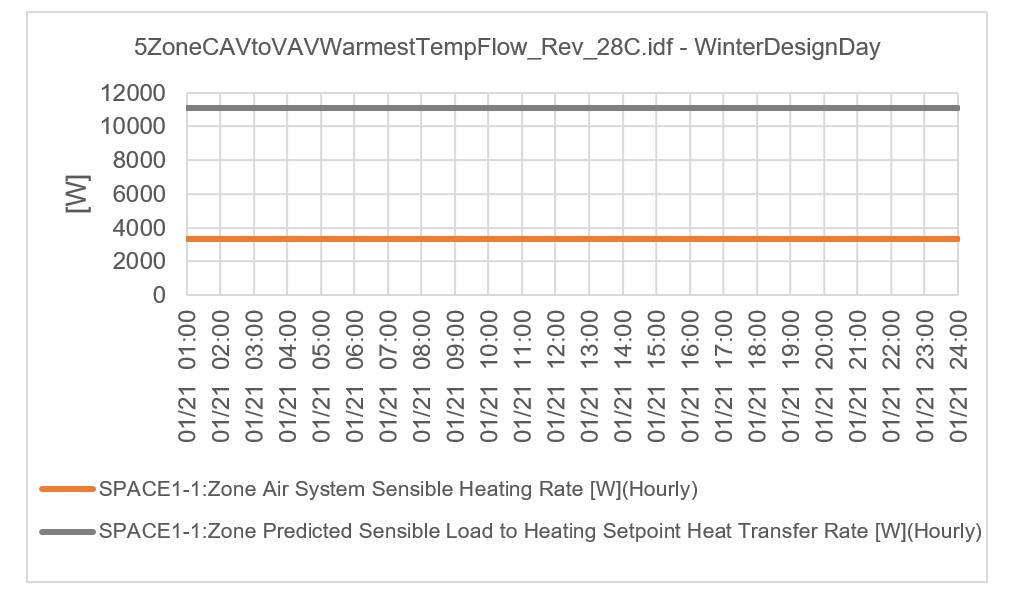SetpointManager:WarmestTemperatureFlow interferes with proper autosizing in WinterDesignDay
A bug report. I found that zone air temperature does not meet heating temperature setpoint in WinterDesignDay if AirLoop is controlled by SetpointManager:WarmestTemperatureFlow. You may think SetpointManager:WarmestTemperatureFlow is irrelevant to heating, but actually it affects sizing run in WinterDesignDay. You can see the bug by running the EnergyPlusV22-2-0 ExampleFile: 5ZoneCAVtoVAVWarmestTempFlow.idf for sizing periods.

You will see a larger temperature gap if you set higher thermostat heating setpoint.

Only about one-third of the predicted load is actually heated.


Here are my findings from some tests for now:
- The bug occurs in models with
AirTerminal:SingleDuct:ConstantVolume:ReheatorAirTerminal:SingleDuct:VAV:Reheat, but does not occur in models withAirTerminalSingleDuct:SeriesPIU:ReheatorAirTerminalSingleDuct:ParallelPIU:Reheat. I have not tested all the AirTerminals. - It's not that the reheat coil does not work at all. The reheat coil heats the zone to some extent, but it's insufficient.
- The gap between
Zone Thermostat Heating Setpoint Temperatureand actualZone Air Temperatureis noticeable when the reheat coil type isCoil:Heating:Water. The gap is relatively small (0.1 to 0.3ºC) forCoil:Heating:Electric. - The bug occurs regardless of control strategy (
FlowFirstorTemperatureFirst) - The weird thing is that unmet hour (
Zone Heating Setpoint Not Met While Occupied Time) is not detected (i.e. 0) during the sizing run even though the zone heating setpoint is not met. - No warnings/errors are reported in the err file.
Originally, I found the bug in my ASHRAE90.1 Baseline case: System 7(VAV with Reheat). You know, system 5 through 8 need to have Supply Air Temperature Reset Control as per ASHRAE90.1 G3.1.3.12, and SetpointManager:WarmestTemperatureFlow needs to be used for the control (Note that SetpointManager:Warmest is inappropriate because the control strategy should be FlowFirst rather than TemperatureFirst according to ANSI/ASHRAE/IES Standard90.1 Performance Rating Method Reference Manual 3.6.2.2 Cooling Control, Cooling Supply Air Temperature Control). I got so many unmet hours in my annual simulation as the reheat coil was not autosized properly.
I would like to know if there is a way around the bug. If not, the reheat coil capacity has to be hardsized with reference to Zone Predicted Sensible Load to Heating Setpoint Heat Transfer Rate.






Posted issue as https://github.com/NREL/EnergyPlus/issues/10004